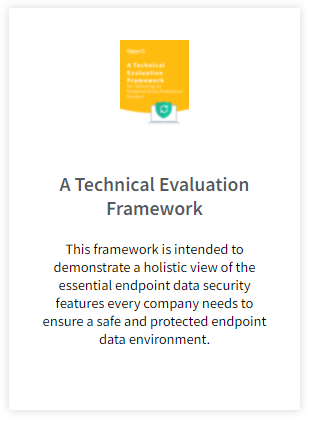The best way to protect yourself, your users and your business against ransomware is by setting up a proactive defence. The ransomware statistics paint a frightening picture for anyone in charge of IT: In Q3 2016 alone, 18 million new malware samples were captured. Source: Panda Labs What that means is that the criminals…
Cyber Security: Data vulnerability
Data loss from internal threats, negligence and/or accidents was rated the “next big threat” by 37 percent of respondents in the 2010 CDW Cyber Security Straw Poll, revealing that human factors are considered a significant challenge and vulnerability by enterprise IT managers.
Data loss is a significant and obvious precursor to vulnerability as if data is lost it can result in unauthorized access. The security threat of access and publication of confidential business data has been further highlighted by Wikileaks’ ability to draw media attention to company’s innermost secrets. If your business data isn’t properly protected, a plethora of confidential information can find its way online- including e-mails, legal documents, and records of major decisions such as fighting legislation and employee dismissals.
The risk of access to confidential business data, whether through an attack on the network or resulting from an internal threat, should be managed effectively with secure business data protection.
The endpoint imperative
Data that isn’t effectively protected, is left vulnerable to attacks, data breaches and data loss.
Loss of user data is a pervasive cyber security problem among global companies, according to a survey released by Ponemon Institute and Vontu, a San Francisco-based provider of data loss prevention products.
According to the survey, which queried nearly 500 information security professionals, Eighty-one percent of companies reported the loss of one or more laptops containing sensitive information during the past 12 months,
Lost endpoint data can result in
– Access to confidential information by unauthorised parties
– Sensitive data being published online
– Industrial espionage
– Reputational damage
– Compliance consequences
– Legal action
Traditionally, IT data architecture has focused on a ‘from-the-inside-outwards’ approach. However, with increased mobility in modern enterprises and the quickening advances of technology, it has become paramount for IT to begin with the endpoint in mind.
The results of our 2010 Data Loss survey support this with nearly half (46%) of respondents relying on a data backup policy (instructing users to backup to a server or external device) for endpoint user data protection.
However the failure of users to follow company policy was also highlighted as the main cause of data loss.
Even more disturbing was that 68% of respondents were unsure if their company would be able to recover user data in the case of data loss.
Without a user data backup solution that effectively protects the data on laptops & desktops, enterprises run the risk of significant data security breaches and user data loss.
Endpoint data security focuses on solutions for user data residing on endpoint devices such as laptop and desktop computers, while central control over the software solution is retained.
7 Things we Know:
1 We all save data on our laptops and desktops
2 Most users never backup business critical data
3 Backup policies do not work because it relies on the individual to adhere to policy
4 Users forget, don’t know what to do and think it takes too much time
5 There is no central control over what data is backed up, and how often
6 Storage infrastructures cannot handle a large number of users simultaneously backing up
7 IT then gets blamed when users lose their data
Added to that: Remote servers, laptops and desktops all contain business critical information with remote logins from employees creating a greater geographic dispersion of data that further compounds the risk. More often than not, remote sites do not have dedicated IT staff and the backup process is flawed.
FEATURED POSTS
IT Managers: How to Protect Your Users Against Ransomware
The best way to protect yourself, your users and your business against ransomware is by setting up a proactive defence. The ransomware statistics paint a frightening picture for anyone in charge of IT: In Q3 2016 alone, 18 million new malware samples were captured. Source: Panda Labs What that means is that the criminals…
Cibecs Joins Silicon Valley Top 20
Cibecs Joins Silicon Valley Companies to be Listed on Top 20 Most Promising Storage Solution Providers Cibecs, a leading South African endpoint backup, protection and security solution, has been recognised as one of the 20 Most Promising Storage Solutions by CIO Review. The list, compiled by industry insiders, highlights leading global technology providers that offer effective…
4 Signs You Need a New Endpoint Data Backup Solution
With more workers depending on laptops it is more important than ever to ensure that the work protected and stored on those devices is backed up and protected. Forrester Research says that 45% of corporate executives don’t follow policies for data use and handling. Underlining how at risk almost half of a business’s data actually…











